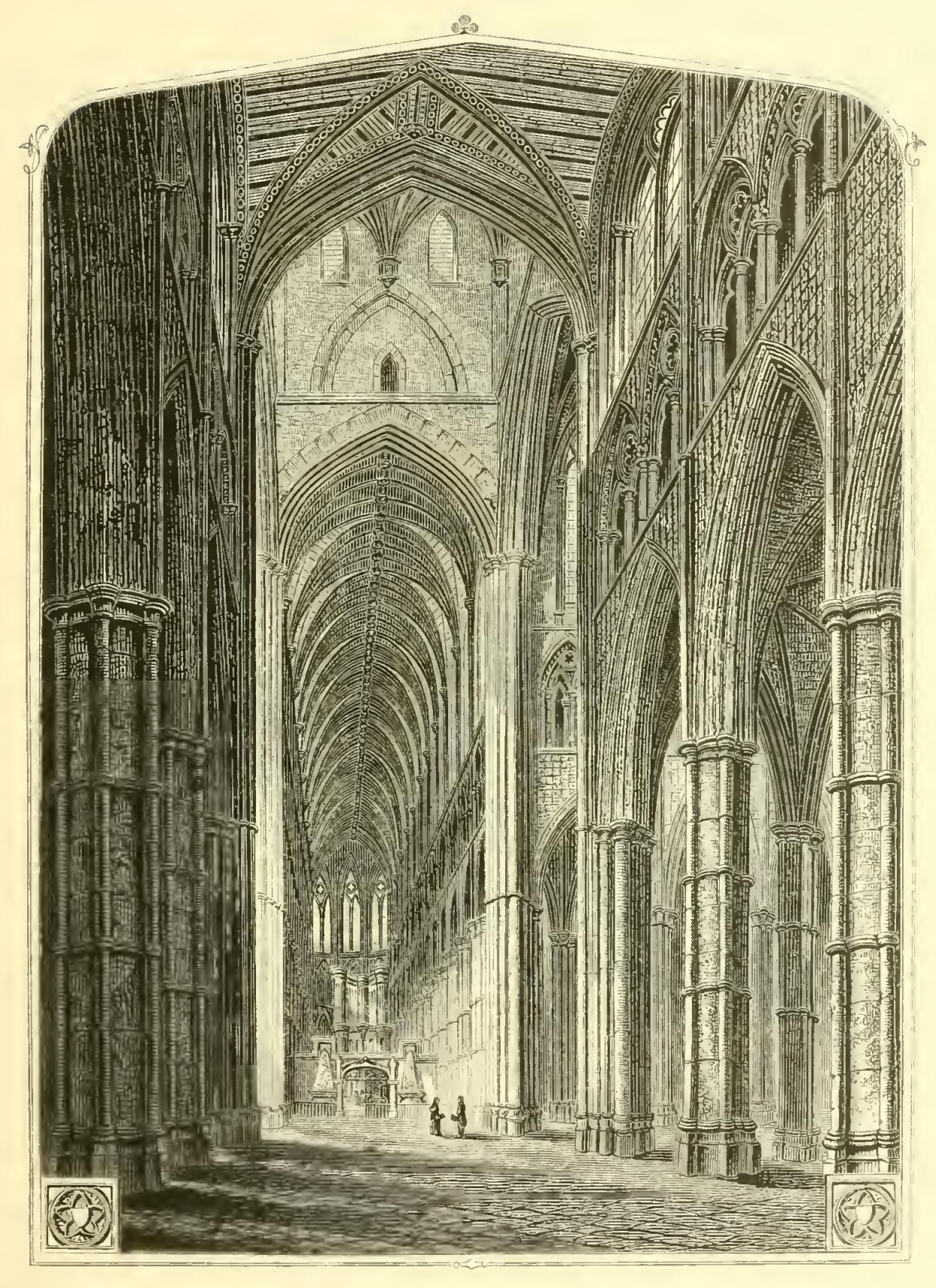Washington Irving explores "Westminster Abbey" ...
On one of those sober and rather melancholy days in the latter part of autumn when the shadows of morning and evening almost mingle together, and throw a gloom over the decline of the year, I passed several hours in rambling about Westminster Abbey. There was something congenial to the season in the mournful magnificence of the old pile, and as I passed its threshold it seemed like stepping back into the regions of antiquity and losing myself among the shades of former ages.I entered from the inner court of Westminster School, through a long, low, vaulted passage that had an almost subterranean look, being dimly lighted in one part by circular perforations in the massive walls. Through this dark avenue I had a distant view of the cloisters, with the figure of an old verger in his black gown moving along their shadowy vaults, and seeming like a spectre from one of the neighboring tombs. The approach to the abbey through these gloomy monastic remains prepares the mind for its solemn contemplation. The cloisters still retain something of the quiet and seclusion of former days. The gray walls are discolored by damps and crumbling with age; a coat of hoary moss has gathered over the inscriptions of the mural monuments, and obscured the death’s heads and other funeral emblems. The sharp touches of the chisel are gone from the rich tracery of the arches; the roses which adorned the keystones have lost their leafy beauty; everything bears marks of the gradual dilapidations of time, which yet has something touching and pleasing in its very decay.The sun was pouring down a yellow autumnal ray into the square of the cloisters, beaming upon a scanty plot of grass in the centre, and lighting up an angle of the vaulted passage with a kind of dusky splendor. From between the arcades the eye glanced up to a bit of blue sky or a passing cloud, and beheld the sun-gilt pinnacles of the abbey towering into the azure heaven.










































































































































































No comments:
Post a Comment